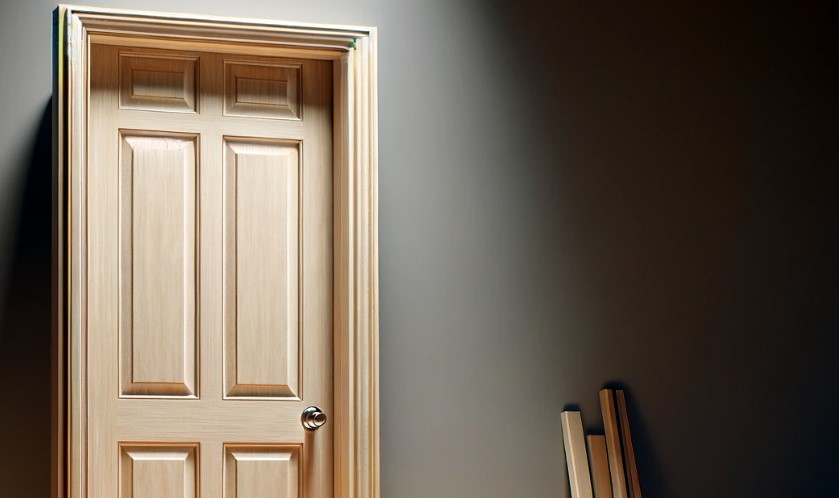A prehung door is a complete ready-to-install door system, consisting of a door slab already attached to a frame and hinges. Unlike a basic slab door, a prehung door includes essential hardware and components like hinges, jambs, and sometimes casing and weatherstripping. This makes installation much simpler compared to a slab door that requires creating and fitting a frame.
Key Parts of a Prehung Door
The key components of a prehung door include:
- Door slab: The actual door is made of wood, fiberglass, or steel. Slabs may be solid or hollow.
- Frame: The door jamb and header create an opening for the slab. Side jambs attach the hinges.
- Hinges: Connects the slab and jamb for swinging open and closed. Quality hinges ensure smooth operation.
- Weatherstripping: Seals gaps between the door and jambs to prevent air leaks.
- Casing: Decorative molding trims the door jambs.
So in summary, a pre-hung door has all essential parts in one pre-assembled unit.
Benefits of Choosing a Prehung Door
Compared to a basic slab door, a prehung door offers several advantages:
Easier DIY Installation
For DIYers with limited carpentry skills, a prehung door is much simpler to install. The frame creates a ready-made opening, sparing you from precise measuring and cutting. With hinges and holes pre-drilled, you avoid tricky mortising and drilling.
Better Fit and Operation
Since everything is factory assembled, a prehung door should fit the opening perfectly and operate smoothly right away. The manufacturer balances and spaces the hinges so the slab swings easily without binding or rubbing.
More Versatile for Various Openings
Pre-hung doors come in standard sizes but custom sizing is also available. So you can match an existing wall opening more precisely. For unusual openings, trimmer studs fill gaps to fit the prehung unit.
Key Differences from Slab Doors
While prehung and slab doors share similarities, some distinct differences affect your decision:
Construction
Slab doors are simple flat panels. Prehung doors add side jambs, header, and hinges into one prefabricated unit.
Hardware and Components
Slab doors are bare bones – just the slab without hardware. Prehung doors include essential parts like hinges and often casing or weatherstripping.
Installation
Installing a slab door requires significant carpentry to construct and then fit a frame. Prehung units fit into openings since the frame is pre-made.
Cost
Basic slab doors are generally the cheaper option. But prehung doors save on labor for installation, finishing, and fitting.
When to Choose a Prehung Door
Here are prime situations where opting for a prehung door makes the most sense:
Replacing Old Doors
Upgrading aged, warped doors is simpler with prehung rather than modifying existing frames. Prehung doors ensure smooth, reliable performance.
Limited DIY Experience
DIY novices often lack the skills to cut precise openings and mortises or fine-tune door swings. Prehung doors are beginner-friendly.
Matching Existing Frames
If you want a new door to blend with existing trim work, a fresh prehung door with integrated casing saves finishing labor.
Step-By-Step Prehung Door Installation
Installing a prehung door takes careful preparation and precision, but the sequence is straightforward:
Preparation
Remove the existing door unit and trim opening to accept standard-sized prehung door. Check opening dimensions match the prehung unit.
Position & Secure The Frame
Set the prehung door into an opening, using shims to plumb and level the frame. Nail through jambs into framing to temporarily hold it in place.
Check Fit & Operation
Test door swing and closure. Add/adjust shims until the slab operates smoothly without binding or gaps in the frame.
Finishing Touches
Caulk gaps in exterior frames, install locksets and knobs per manufacturer instructions. Finish jamb edges and paint/stain as needed.
Conclusion
Specifying a prehung door costs moderately more than a basic slab but adds great value in easier installation and reliable performance. Prehung doors are the smartest choice for DIYers lacking carpentry expertise or matching existing trim work. Considering the labor they save on fitting and finishing, prehung doors are a sound investment that pays off for years after installation.
